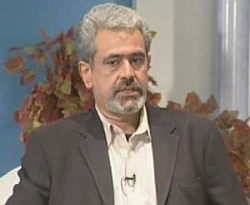Template:Pictorial-Islam-options: Difference between revisions
Jump to navigation
Jump to search
| [checked revision] | [checked revision] |
mNo edit summary |
mNo edit summary |
||
| Line 237: | Line 237: | ||
<option weight="1">{{Pictorial-Islam|1=Dhul-Qarnayn and the Sun | <option weight="1">{{Pictorial-Islam|1=Dhul-Qarnayn and the Sun Setting in a Muddy Spring|2=[[File:Rising place of the sun.JPG|280px|link=Dhul-Qarnayn and the Sun Setting in a Muddy Spring]]|3=The precise meaning of the opening phrases in verses 86 and 90 in the 18th chapter of the Qur’an, Sura al-Kahf, or “The Cave”, is a matter of considerable controversy. Our analysis shows that the various interpretations that have been proposed for verses 18:86 and 18:90 in the Qur’an to reconcile them with scientific facts do not stand up to detailed scrutiny. | ||
The evidence overwhelmingly supports the clear and obvious interpretation that this is intended to be understood as a historical account in which Dhu’l Qarnayn travelled until he reached the place where the sun sets and actually found that it went down into a muddy spring near to where a people were, and that he then travelled until he reached the place where the sun rises and actually found that it rose up above a people who lived close to the place where the sun rises. ([[Dhul-Qarnayn and the Sun Setting in a Muddy Spring|''read more'']])}}</option> | The evidence overwhelmingly supports the clear and obvious interpretation that this is intended to be understood as a historical account in which Dhu’l Qarnayn travelled until he reached the place where the sun sets and actually found that it went down into a muddy spring near to where a people were, and that he then travelled until he reached the place where the sun rises and actually found that it rose up above a people who lived close to the place where the sun rises. ([[Dhul-Qarnayn and the Sun Setting in a Muddy Spring|''read more'']])}}</option> | ||
Revision as of 00:27, 4 February 2014
Also see: Template:Pictorial-Islam
|
